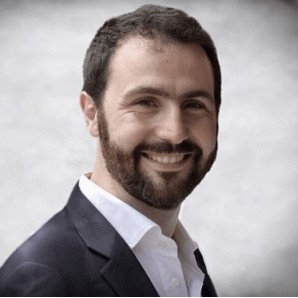Biomaterials and Biological Mediators for Periodontal and Bone Regeneration
A special issue of Materials (ISSN 1996-1944). This special issue belongs to the section "Biomaterials".
Deadline for manuscript submissions: closed (31 December 2020) | Viewed by 53376
Special Issue Editors
Interests: periodontal diseases; implant dentistry; peri-implant diseases
Special Issues, Collections and Topics in MDPI journals
Interests: etiopathogenesis, diagnosis and therapy of periodontal and peri-implant disease; periodontal and bone regenerative therapy; innovative operative protocols in implantology
Special Issue Information
Dear Colleagues,
As a matter of fact, the treatment of periodontitis represents a relevant public health challenge, with significant socio-economic implications. A large part of such treatment aims to preserve periodontal and bone tissue over time, but in case of tissue loss due to the disease progression the ultimate and most desirable therapeutic goal remains the rebuilding of lost tissues with tissues that are structurally and functionally the same: in few words periodontal and bone regeneration.
Dentistry probably represents one of the medical field in which the study and the utilization of innovative biomaterials and operative protocols for tissue reconstruction is much more present.
Autogenous, omologous, etherologous and synthetic bone grafts, resorbable and non-resorbable membranes, meshes, matrices, fixation pins or screws and other surgical devices, as well as inducing biological mediators, have been proposed and efficiently used to promote the reconstruction of both hard and soft tissues.
In this Special Issue on “Biomaterials and Biological Mediators for Periodontal and Bone Regeneration”, the aim will be to give an updated overview on the most stably recognized regenerative approaches and the most recent new developments for tissue regeneration.
Both pre-clinical and clinical studies are invited to be submitted, as well as narrative or systematic reviews, concerning the characterization of such biomaterials/biological mediators and their clinical applications for the regeneration of intraosseous periodontal defects and furcations, for soft tissue reconstruction (periodontal plastic surgery), for the preservation of post-extraction alveolar sockets and for the reconstruction of lateral and/or vertical bone defects before or contextually to dental implant placement for rehabilitative purposes.
Prof. Marco Annunziata
Prof. Luigi Guida
Guest Editors
Manuscript Submission Information
Manuscripts should be submitted online at www.mdpi.com by registering and logging in to this website. Once you are registered, click here to go to the submission form. Manuscripts can be submitted until the deadline. All submissions that pass pre-check are peer-reviewed. Accepted papers will be published continuously in the journal (as soon as accepted) and will be listed together on the special issue website. Research articles, review articles as well as short communications are invited. For planned papers, a title and short abstract (about 100 words) can be sent to the Editorial Office for announcement on this website.
Submitted manuscripts should not have been published previously, nor be under consideration for publication elsewhere (except conference proceedings papers). All manuscripts are thoroughly refereed through a single-blind peer-review process. A guide for authors and other relevant information for submission of manuscripts is available on the Instructions for Authors page. Materials is an international peer-reviewed open access semimonthly journal published by MDPI.
Please visit the Instructions for Authors page before submitting a manuscript. The Article Processing Charge (APC) for publication in this open access journal is 2600 CHF (Swiss Francs). Submitted papers should be well formatted and use good English. Authors may use MDPI's English editing service prior to publication or during author revisions.
Keywords
- Periodontal regeneration
- Bone regeneration
- Bone augmentation
- Biomaterials
- Biological mediators







